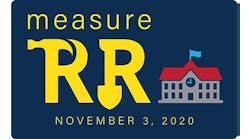Schools installing new playgrounds or upgrading existing play areas need to make sure the equipment and paths are accessible to people with disabilities.
The U.S. Access Board developed guidelines in 2001 to ensure that playgrounds comply with the Americans with Disabilities Act.
The key unit in a play area is a “play component,” which is defined as an element designed to generate specific opportunities for play, socialization and learning. Swings, slides and climbers are play components, but ramps and steps are not — play is not their primary purpose. Play components come in different types, such as swinging, rocking, climbing or sliding, and can be elevated or ground level.
The guidelines state that for each type of play component present in a play area, at least one component of each type must be at ground level and on an accessible route. The layout of the play components should encourage interaction among all children.
“Grouping all ground-level play components accessed by children with disabilities in one location does not constitute integration,” the guidelines say.
Other guidelines:
-
At least half of the elevated play components must be on an accessible route.
-
The maximum slope for a ground-level accessible route is 1 to 16.
-
Elevated accessible routes must connect the entry and exit points of at least 50 percent of the elevated play components in the play area.
-
On play structures with 20 or more elevated components, ramps are required; they must connect to at least 25 percent of the elevated components.
-
Landings, the level surfaces at the top and bottom of each ramp run, must be as wide as the ramp they connect to, and must be at least 60 inches long.
The Access Board's guide for creating accessible play areas can be found online at http://www.access-board.gov/play/guide/intro.htm.
NOTABLE
5
The minimum number of ground-level play components required to be on an accessible route at a play area that has 14 to 16 elevated play components.
3
The minimum number of different types of ground-level play components required to be on an accessible route at a play area that has 14 to 16 elevated play components.
60
The minimum clear width, in inches, of a ground-level accessible route for a play area.
1:12
The maximum slope of an elevated ramp run in a play area.
Source: U.S. Access Board, “A Guide to the ADA Accessibility Guidelines for Play Areas”

